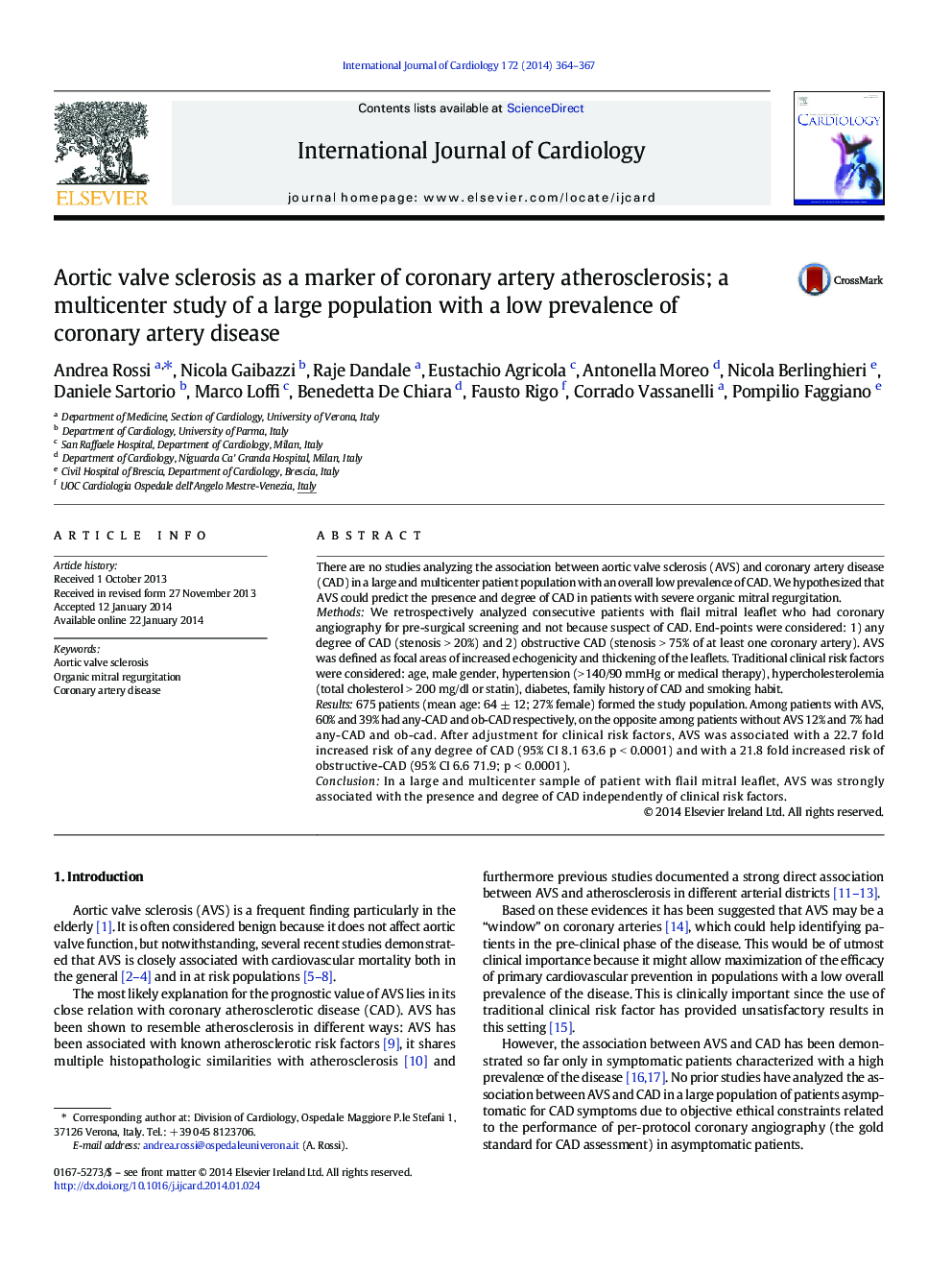| Article ID | Journal | Published Year | Pages | File Type |
|---|---|---|---|---|
| 5972023 | International Journal of Cardiology | 2014 | 4 Pages |
There are no studies analyzing the association between aortic valve sclerosis (AVS) and coronary artery disease (CAD) in a large and multicenter patient population with an overall low prevalence of CAD. We hypothesized that AVS could predict the presence and degree of CAD in patients with severe organic mitral regurgitation.MethodsWe retrospectively analyzed consecutive patients with flail mitral leaflet who had coronary angiography for pre-surgical screening and not because suspect of CAD. End-points were considered: 1) any degree of CAD (stenosis > 20%) and 2) obstructive CAD (stenosis > 75% of at least one coronary artery). AVS was defined as focal areas of increased echogenicity and thickening of the leaflets. Traditional clinical risk factors were considered: age, male gender, hypertension (> 140/90 mmHg or medical therapy), hypercholesterolemia (total cholesterol > 200 mg/dl or statin), diabetes, family history of CAD and smoking habit.Results675 patients (mean age: 64 ± 12; 27% female) formed the study population. Among patients with AVS, 60% and 39% had any-CAD and ob-CAD respectively, on the opposite among patients without AVS 12% and 7% had any-CAD and ob-cad. After adjustment for clinical risk factors, AVS was associated with a 22.7 fold increased risk of any degree of CAD (95% CI 8.1 63.6 p < 0.0001) and with a 21.8 fold increased risk of obstructive-CAD (95% CI 6.6 71.9; p < 0.0001).ConclusionIn a large and multicenter sample of patient with flail mitral leaflet, AVS was strongly associated with the presence and degree of CAD independently of clinical risk factors.
